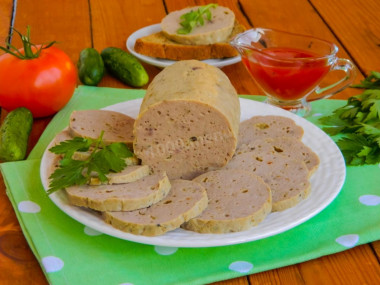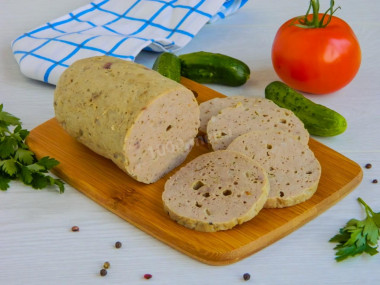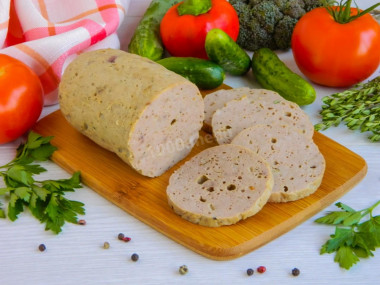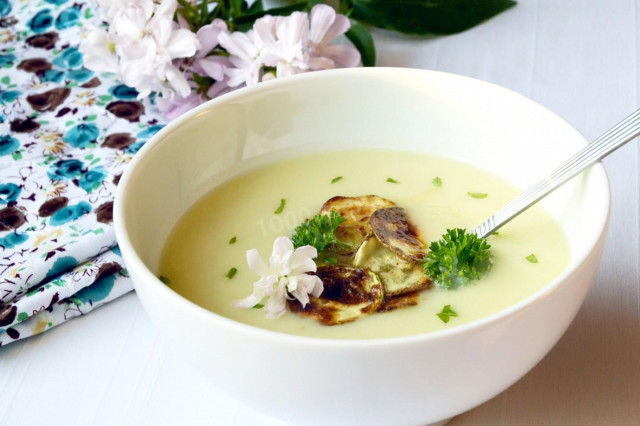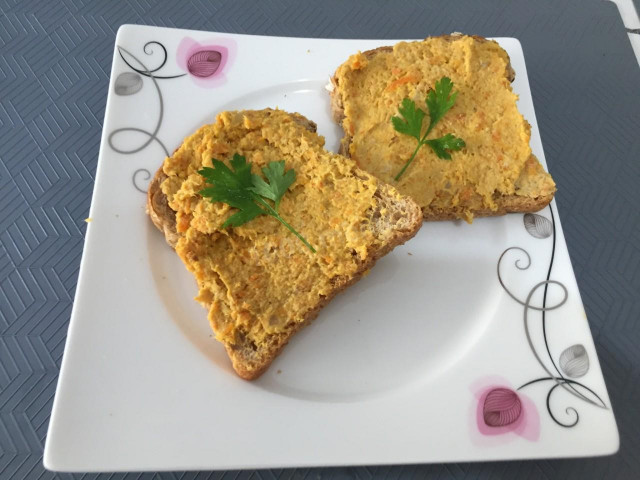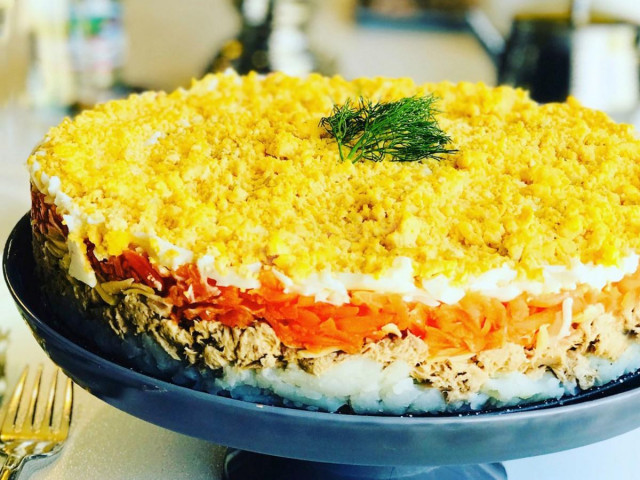Composition / ingredients
Step-by-step cooking
Step 1:
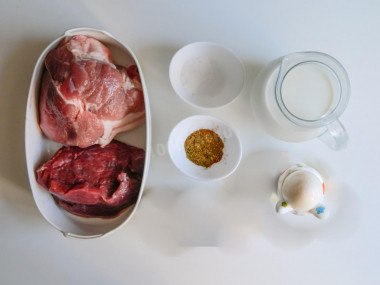
How to make homemade sausage from pork and beef? Prepare all the necessary ingredients. Buy meat in trusted stores so that it is fresh and of high quality. Fresh meat should not have a pungent smell. If you press and release it, there should be no dent left. Take the egg C1 or C0. Of the spices, nutmeg is enough, but if desired, you can add some more suitable to the meat.
Step 2:
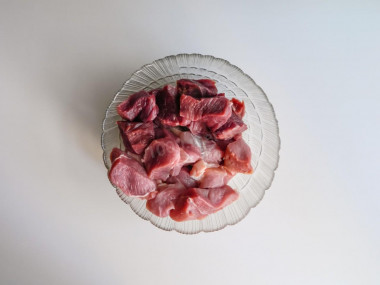
Wash the meat under running water, dry it with paper towels. Excess water will spoil the consistency of minced sausage. If there are veins and films on the beef, remove them. Cut the meat into pieces with a knife so that it is convenient to twist it in a meat grinder.
Step 3:
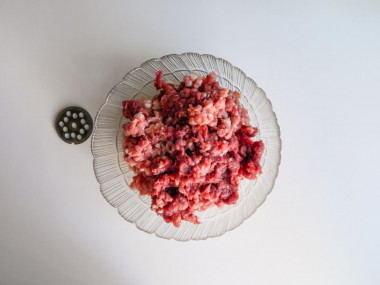
Twist the meat in a meat grinder by passing through a nozzle with medium holes.
Step 4:
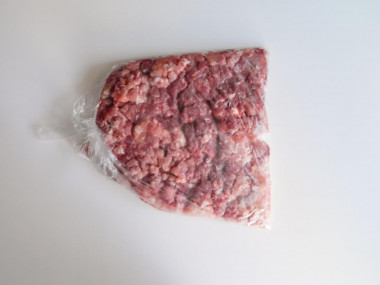
Put the minced meat in a plastic bag. Flatten it so that the minced meat layer is not too thick - 2-3 cm. Put it in the freezer for 1-1.5 hours. This is necessary in order for the meat to be crushed better.
Step 5:
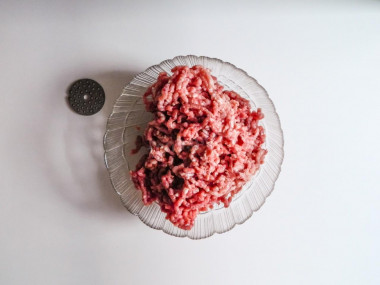
Twist the frozen minced meat again in a meat grinder, but with small holes.
Step 6:
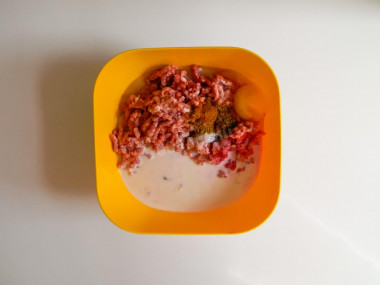
Transfer the minced meat to a deep bowl with a rounded bottom. Add all remaining ingredients. If you want the sausage to have a pink (sausage) color, replace half of the salt with a teaspoon with a slide of nitrite salt. I did it without her.
Step 7:
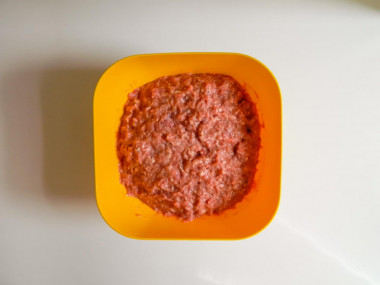
Mix everything thoroughly until smooth. It is more convenient to do it with your hands.
Step 8:
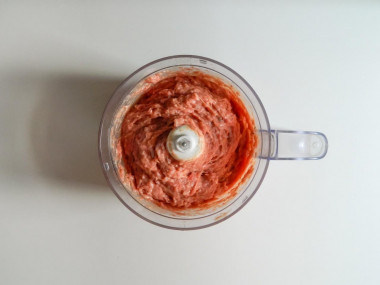
Then make a homogeneous meat paste from the minced meat. This can be done using an immersion blender, if its power allows, or using a bowl of a food processor with a knife attachment.
Step 9:
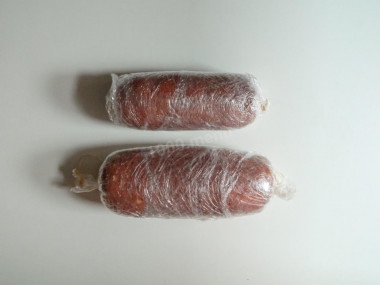
Proceed to the sausage formation. Take a plastic wrap or plastic bag. In the package in the place where the bottom is, make a knot. Carefully transfer the minced meat into the bag. Let the air out of the bag and tie a knot at the other end of the bag. If you, like me, will use food wrap, tightly wrap the minced meat in several layers, leaving the film at both ends so that you can tie the ends of the sausage. Sausages should turn out dense and elastic.
Step 10:
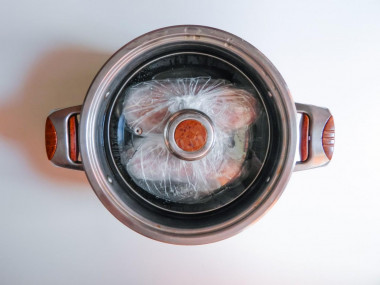
I made 2 sausages - one with a diameter of 4 cm, the second - about 6. To make sure, I want to cook the sausage in a large saucepan at a temperature of no more than 80 degrees for 2 hours, pressing the load so that it is completely in the water. In the absence of a special kitchen thermometer, navigate by water. It should not boil. During the cooking process, the sausage needs to be turned over several times.
Step 11:
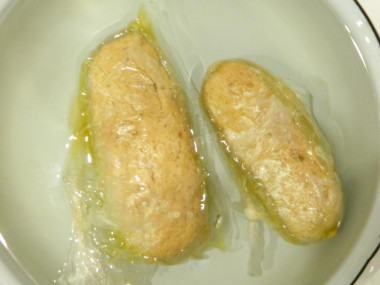
Dip the finished milk sausage in ice water and leave to cool for 15-20 minutes.
Step 12:
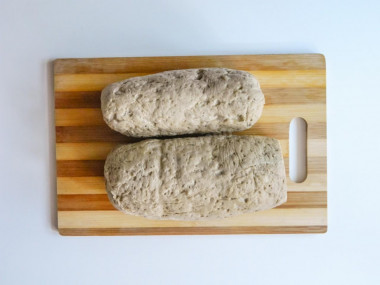
Remove the shells from the sausage and taste.
After cooling, the sausage is ready to eat. I like it better when it stays in the refrigerator for a few hours.
Keep the sausage in the refrigerator, preferably in glass or ceramic dishes for no more than 5 days.
For this recipe, it does not matter which part of the carcass to choose, since it will still become soft during cooking.
Be sure to wash the eggs before use, as even the seemingly clean shell may contain harmful bacteria. It is best to use food detergents and a brush.
If you use ready-made spice mixes, be sure to read the composition on the package. Often, salt is already present in such mixtures, take this into account, otherwise you risk over-salting the dish.
Caloric content of the products possible in the composition of the dish
- Melted beef fat - 871 kcal/100g
- Fat beef - 171 kcal/100g
- Lean beef - 158 kcal/100g
- Beef brisket - 217 kcal/100g
- Beef - okovalok - 380 kcal/100g
- Beef - lean roast - 200 kcal/100g
- Beef shoulder - 137 kcal/100g
- Beef - ribs - 233 kcal/100g
- Beef - ham - 104 kcal/100g
- Beef - tail - 184 kcal/100g
- Boiled ham - 269 kcal/100g
- Beef corned beef - 216 kcal/100g
- Whole cow's milk - 68 kcal/100g
- Milk 3.5% fat content - 64 kcal/100g
- Milk 3.2% fat content - 60 kcal/100g
- Milk 1.5% fat content - 47 kcal/100g
- Concentrated milk 7.5% fat content - 140 kcal/100g
- Milk 2.5% fat content - 54 kcal/100g
- Pork fat - 333 kcal/100g
- Pork meat - 357 kcal/100g
- Pork - low-fat roast - 184 kcal/100g
- Pork chop on a bone - 537 kcal/100g
- Pork - schnitzel - 352 kcal/100g
- Pork Shoulder - 593 kcal/100g
- Boar's leg - 113 kcal/100g
- Pork - 259 kcal/100g
- Spices dry - 240 kcal/100g
- Chicken egg - 80 kcal/100g
- Table salt - 0 kcal/100g
- Nutmeg - 556 kcal/100g


